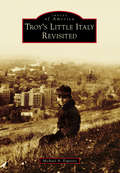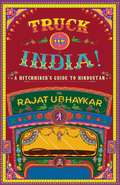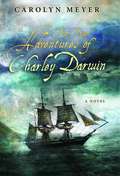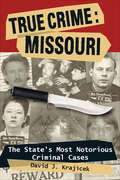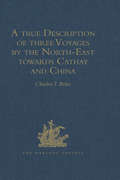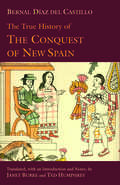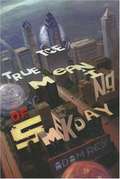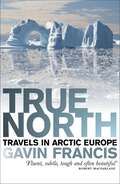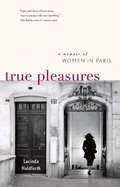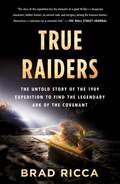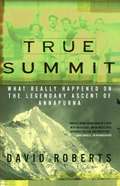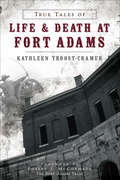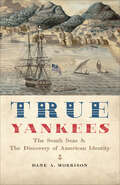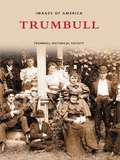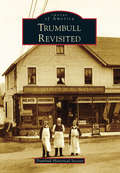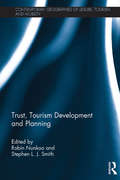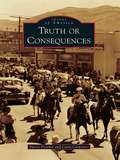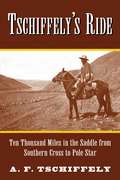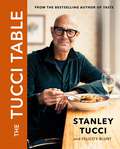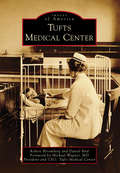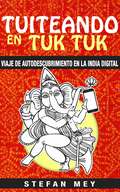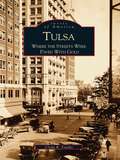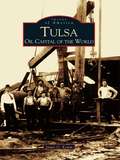- Table View
- List View
Troy's Little Italy Revisited
by Michael A. EspositoA significant part of Troy's history, and that of its neighborhood, is the immigration of diverse ethnic groups. By 1900, the US Census reported 465 Italian-born residents in Troy, and in 1930, there were 2,000 Italian immigrants. From 1900 to the 1950s, Little Italy, bordering the central business district from Ferry Street to the Poestenkill and from Fourth Street to Prospect Park, was predominately an Italian or Italian American neighborhood. Among the close-knit families of Troy's Little Italy were import stores, 60 mom-and-pop shops, churches, schools, a community center, and a veterans' post, all of which were found within a 20-block radius. America's Little Italy neighborhoods became centers of ethnic culture and heritage. In the 1960s, urban renewal challenged Troy and other cities with mixed results. Today, there is resurgence in Troy, with plans to expand the city's central historic district to include most of Little Italy. In the meantime, empty nesters, artists, and young professionals are moving into the neighborhood as valuable community partners continue to support the efforts of the neighborhood group Troy Little Italy.
Truck de India!: A Hitchhiker's guide to Hindustan
by Mr. Rajat Ubhaykar"The share auto I squeeze into next seems unusually vulnerable after a night in the truck - too compact, too low down. Perhaps, these are the usual side effects of prolonged riding with the king of the road, I think to myself. But it is only when I fill in ‘truck’ as my mode of transportation in the hotel ledger at Udaipur does the utter ludicrousness of my endeavour truly hit home" Think truck drivers, and movie scenes of them drunkenly crushing inconvenient people to their gravelly deaths come to mind. But what are their lives on the road actually like? In Truck De India!, journalist Rajat Ubhaykar embarks on a 10,000 km-long, 100% unplanned trip, hitchhiking with truckers all across India. On the way, he makes unexpected friendships; listens to highway ghost stories; discovers the near-fatal consequences of overloading trucks; documents the fascinating tradition of truck art in Punjab; travels alongside nomadic shepherds in Kashmir; encounters endemic corruption repeatedly; survives NH39, the insurgent-ridden highway through Nagaland and Manipur; and is unfailingly greeted by the unconditional kindness of perfect strangers. Imbued with humour, empathy, and a keen sense of history, Truck De India! is a travelogue like no other you've read. It is the story of India, and Indians, on the road.
The True Adventures of Charley Darwin
by Carolyn MeyerThe fascinating journey of a famous naturalist Young Charley Darwin hated school--he much preferred to be outside studying birds' eggs, feathers, and insects. And so, at the age of twenty-one, he boarded a ship called HMS Beagle and spent five thrilling but dangerous years sailing around the world, studying plant and animal life that was beyond anything he could have imagined. Here, just in time for Darwin's 200th birthday and the 150th anniversary of the publication of his groundbreaking On the Origin of Species, historical novelist Carolyn Meyer tells the story of his unconventional adventures. It's the story of a restless childhood, unrequited teenage love, and a passion for studying nature that was so great, Darwin would sacrifice everything to pursue it.
True Crime: The State's Most Notorious Criminal Cases
by David J KrajicekComprehensive look into the dangerous world of glider warfare.
A true Description of three Voyages by the North-East towards Cathay and China, undertaken by the Dutch in the Years 1594, 1595, and 1596, by Gerrit de Veer: Published at Amsterdam in the Year 1598, and in 1609 translated into English by William Phillip (Hakluyt Society, First Series)
by Charles T. BekeWith an appendix of documents printed by Hakluyt and Purchas. Revised in First Series 54. The plates are taken from the German edition of De Bry, 1599, and are copies of the original Amsterdam edition. This is a new print-on-demand hardback edition of the volume first published in 1853.
The True History of The Conquest of New Spain
by Ted Humphrey Bernal Diaz del Castillo Janet BurkeThis rugged new translation--the first entirely new English translation in half a century and the only one based on the most recent critical edition of the Guatemalan MS--allows Diaz to recount, in his own battle-weary and often cynical voice, the achievements, stratagems, and frequent cruelty of Hernando Cortes and his men as they set out to overthrow Moctezuma's Aztec kingdom and establish a Spanish empire in the New World.The concise contextual introduction to this volume traces the origins, history, and methods of the Spanish enterprise in the Americas; it also discusses the nature of the conflict between the Spanish and the Aztecs in Mexico, and compares Diaz's version of events to those of other contemporary chroniclers. Editorial glosses summarize omitted portions, and substantial footnotes explain those terms, names, and cultural references in Diaz's text that may be unfamiliar to modern readers. A chronology of the Conquest is included, as are a guide to major figures, a select bibliography, and three maps.
The True Meaning of Smekday
by Adam RexGratuity Tucci gets a fairly early start behind the wheel. She's 11--and she's good if you want to know. Plus, laws don't matter too much these days, and Tip is desperate to find her mom who was abducted by aliens on Christmas Eve.
True North: Travels in Arctic Europe
by Gavin FrancisA journey through the far north from the Shetland Islands to Greenland and beyond: &“A wonder-voyage . . . often beautiful&” (Robert Macfarlane, author of Underland). The stark, vast beauty of the remote landscape of Arctic Europe has been the focus of human exploration for thousands of years. In this striking blend of travel writing, history, and mythology, Gavin Francis offers a unique portrait of the northern fringes of Europe. His journey begins in the Shetland Islands, takes him to the Faroes, Iceland, Greenland, Svalbard, and Lapland. Following in the footsteps of the area's early pioneers, the author observes how the region has adapted to the twenty-first century, offering insight into the lives of people he encounters along the way. As with all the best travel writing, True North is an engaging, compassionate tale of self-discovery, blending historical and contemporary narratives. &“His nuanced, often witty, observations of the people and places he encounters mean True North really gets under the skin of Europe&’s magical north.&” —Sunday Herald &“An evocative writer.&” —Booklist on Empire Antarctica
True Pleasures
by Lucinda HoldforthAt a turning point in her life, Lucinda Holdforth journeys to Paris and takes a very personal tour through the lives, loves, and losses of its most celebrated women. From Colette to Nancy Mitford, Marie Antoinette to Coco Chanel, Napoleon's Josephine to Edith Wharton, all were rule-breakers and style-setters. Utterly diverse, they shared one common passion: Paris. Exploring the city in their footsteps, Holdforth, and readers, gain inspiration from the women who created and nurtured the world's most civilized city.
True Raiders: The Untold Story of the 1909 Expedition to Find the Legendary Ark of the Covenant
by Brad RiccaTrue Raiders is The Lost City of Z meets The Da Vinci Code, from critically acclaimed author Brad Ricca.This book tells the untold true story of Monty Parker, a British rogue nobleman who, after being dared to do so by Ava Astor, the so-called “most beautiful woman in the world,” headed a secret 1909 expedition to find the fabled Ark of the Covenant. Like a real-life version of Raiders of the Lost Ark, this incredible story of adventure and mystery has almost been completely forgotten today.In 1908, Monty is approached by a strange Finnish scholar named Valter Juvelius who claims to have discovered a secret code in the Bible that reveals the location of the Ark. Monty assembles a ragtag group of blueblood adventurers, a renowned psychic, and a Franciscan father, to engage in a secret excavation just outside the city walls of Jerusalem.Using recently uncovered records from the original expedition and several newly translated sources, True Raiders is the first retelling of this group’s adventures– in the space between fact and faith, science and romance.
True Summit
by David RobertsIn a startling look at the classic Annapurna -- the most famous book about mountaineering -- David Roberts discloses what really happened on the legendary expedition to the Himalayan peak. In June 1950, a team of mountaineers was the first to conquer an 8,000-meter peak. Maurice Herzog, the leader of the expedition, became a national hero in France, and Annapurna, his account of the historic ascent, has long been regarded as the ultimate tale of courage and cooperation under the harshest of conditions. In True Summit, David Roberts presents a fascinating revision of this classic tale. Using newly available documents and information gleaned from a rare interview with Herzog (the only climber on the team still living), Roberts shows that the expedition was torn by dissent. As he re-creates the actual events, Roberts lays bare Herzog's self-serving determination and bestows long-delayed credit to the most accomplished and unsung heroes. These new revelations will inspire young adventurers and change forever the way we think about this victory in the mountains and the climbers who achieved it.
True Tales of Life & Death at Fort Adams (Landmarks Ser.)
by Kathleen Troost-CramerThe story of a historic Newport, Rhode Island, landmark shadowed by tragedy.For 150 years, Fort Adams guarded the strategic entrance to Narragansett Bay and Newport Harbor. It was the largest coastal fortification in the United States, and though the site never saw a battle, its history is shadowed with dark tragedy. The fort witnessed its first death in 1819 when Private William G. Cornell shot Private William Kane point-blank and without remorse over an unknown argument. Unfortunately, more tragedy would follow. In 1871, twenty-eight-year-old George F. Drake slit his own throat after his sweetheart ended their relationship. And in 1879, Private Franz Koppe was mysteriously attacked, later dying of his injuries. The Spanish influenza arrived at Fort Adams in 1918, killing five soldiers in one month. Through these stories of life and death, author Kathleen Troost-Cramer traces the history of this national landmark.Includes maps and photos
True Yankees: The South Seas and the Discovery of American Identity (The Johns Hopkins University Studies in Historical and Political Science #131)
by Dane A. MorrisonAfter breaking free from British rule, American identity had more to do with sailing to the East than trekking into the West.Honorable Mention, US Maritime History, John Lyman Book AwardsWith American independence came the freedom to sail anywhere in the world under a new flag. During the years between the Treaty of Paris and the Treaty of Wangxi, Americans first voyaged past the Cape of Good Hope, reaching the ports of Algiers and the bazaars of Arabia, the markets of India and the beaches of Sumatra, the villages of Cochin, China, and the factories of Canton. Their South Seas voyages of commerce and discovery introduced the infant nation to the world and the world to what the Chinese, Turks, and others dubbed the "new people."Drawing on private journals, letters, ships’ logs, memoirs, and newspaper accounts, Dane A. Morrison's True Yankees traces America’s earliest encounters on a global stage through the exhilarating experiences of five Yankee seafarers. Merchant Samuel Shaw spent a decade scouring the marts of China and India for goods that would captivate the imaginations of his countrymen. Mariner Amasa Delano toured much of the Pacific hunting seals. Explorer Edmund Fanning circumnavigated the globe, touching at various Pacific and Indian Ocean ports of call. In 1829, twenty-year-old Harriett Low reluctantly accompanied her merchant uncle and ailing aunt to Macao, where she recorded trenchant observations of expatriate life. And sea captain Robert Bennet Forbes’s last sojourn in Canton coincided with the eruption of the First Opium War. How did these bold voyagers approach and do business with the people in the region, whose physical appearance, practices, and culture seemed so strange? And how did native men and women—not to mention the European traders who were in direct competition with the Americans—regard these upstarts who had fought off British rule? The accounts of these adventurous travelers reveal how they and hundreds of other mariners and expatriates influenced the ways in which Americans defined themselves, thereby creating a genuinely brash national character—the "true Yankee." Readers who love history and stories of exploration on the high seas will devour this gripping tale.
True Yankees: The South Seas & the Discovery of American Identity (The Johns Hopkins University Studies in Historical and Political Science #131)
by Dane A. Morrison“[A] fascinating perspective on how America’s early voyages of commerce and discovery to the exotic South Seas helped the new nation forge its identity.” —Eric Jay Dolan, bestselling author of Black Flags, Blue Waters Drawing on private journals, letters, ships’ logs, memoirs, and newspaper accounts, True Yankees traces America’s earliest encounters on a global stage through the exhilarating experiences of five Yankee seafarers. Merchant Samuel Shaw spent a decade scouring the marts of China and India for goods that would captivate the imaginations of his countrymen. Mariner Amasa Delano toured much of the Pacific hunting seals. Explorer Edmund Fanning circumnavigated the globe, touching at various Pacific and Indian Ocean ports of call. In 1829, twenty-year-old Harriett Low reluctantly accompanied her merchant uncle and ailing aunt to Macao, where she recorded trenchant observations of expatriate life. And sea captain Robert Bennet Forbes’s last sojourn in Canton coincided with the eruption of the First Opium War.How did these bold voyagers approach and do business with the people in the region, whose physical appearance, practices, and culture seemed so strange? And how did native men and women—not to mention the European traders who were in direct competition with the Americans—regard these upstarts who had fought off British rule? The accounts of these adventurous travelers reveal how they and hundreds of other mariners and expatriates influenced the ways in which Americans defined themselves, thereby creating a genuinely brash national character—the “true Yankee.” Readers who love history and stories of exploration on the high seas will devour this gripping tale.“The book is informative and entertaining, a rare combination. Highly recommended.” —Choice
Trumbull
by Trumbull Historical SocietyTrumbull, Connecticut, was a small community with a lush landscape spotted with farms and light industries before the era of World War II. After the war, many soldiers returned to the states and came to Trumbull looking for homes. The explosion of Trumbull's economic market caused much of the farmland to become housing developments to accommodate the veterans and their families. This volume of nearly two hundred images looks back at Trumbull during the quieter era between 1890 and 1940, before the town was flooded with the mad rush of people and businesses. These fifty years detail a history marked by the prosperous times of the early twentieth century, the pain and anguish of World War I, and the gloomy grip of the Depression. Small-town life comes alive in the faces and places of Trumbull, and these photographs and their stories take a reader back into a time that seems so much simpler than today's hustle and bustle.
Trumbull Revisited
by Trumbull Historical SocietyIncorporated in 1797, Trumbull, Connecticut, developed from a collection of farms and settlements in the area north of Stratford. Trumbull's neighborhoods reflect the varied identities of these early settlements. The Nichols area features homes dating as far back as the establishment of the Farm Highway, which was laid out in 1696 and remains the third-oldest thoroughfare in the state. In the now-forested Pequonnock Valley, a 19th-century rail bed ambles past the foundations of wool mills, paper mills, and gristmills that served the community through the 1800s. That same rail line carried thousands of fun seekers to the picnic pavilions, toboggan slide, and other attractions of Parlor Rock Amusement Park in the late 1800s. Just to the west of the valley, a small, surviving triangle of the Long Hill Green marks an area that once buzzed with the production of shirts, cigars, and carriages. Today, Trumbull continues to rediscover itself and frequently receives accolades as one of the state's most desirable communities in which to live and raise a family.
Trust, Tourism Development and Planning (Contemporary Geographies of Leisure, Tourism and Mobility)
by Robin Nunkoo Stephen L. J. SmithThe dynamics of trust and distrust are central to understanding modern society, social relations, and development processes. However, numerous studies suggest that societal trust and citizen’s trust in government and its institutions are on the decline, challenging the legitimacy of government and leading to an undemocratic and unsustainable form of development. Recognizing its importance, the authors for the first time situate trust within the context of tourism development and planning. This volume discusses trust in tourism from different yet intrinsically connected perspectives. Chapters review how diminishing societal trust may have adversely affected tourism planning systems, the role of trust in good tourism governance and sustainable tourism, how trust can be used as a facilitator of participatory tourism planning, political trust in tourism institutions, power and how tourism development can be a basis for trust creation among society members by using social capital theory. In addition, a final section on ‘Researching Trust in Tourism Development’ means that readers are not only provided a thorough theoretical framework on trust and an understanding of its importance for sustainable tourism and good governance of the sector, but also methodological aspects of research on trust in the context of tourism development and planning. This significant volume is valuable reading for students, academics and researchers interested in tourism development and planning.
Truth or Consequences
by Cindy Carpenter Sherry Fletcher"Hot Springs, New Mexico, Ain't That Any More" was one of the headlines on April 4, 1950, in the Gallup Independent. As a publicity stunt, Ralph Edwards had invited a town to change its name to "Truth or Consequences," the name of his popular radio quiz show, and Hot Springs agreed to do so. Since the late 1800s, the area has attracted health seekers to bathe in and drink from the area's hot mineral springs. The region is home to Elephant Butte Dam and lake, completed in 1916, which remains one of the largest irrigation dams in the United States. Carrie Tingley Crippled Children's Hospital, built in 1937 by New Mexico governor Clyde Tingley, utilized the natural hot mineral waters to treat children with polio. From the placement of the Hot Springs Bathhouse and Commercial District on the State and National Register of Historic Places to the centennial celebration of Elephant Butte Dam, Truth or Consequences continues to grow and develop while still honoring its heritage.
TSA Baggage: An Inside Look at the Good, the Bad, and the Ugly at America's Airports
by Scott BeckerScott Becker spent over 12 years working for the TSA at Chicago’s O’Hare airport and served it in numerous capacities, from baggage screener to manager. He brings to TSA Baggage a wealth of experience and stories that have something for everyone:•Candid Cameos: Several stories in TSA Baggage feature appearances from celebrities, including Madeleine Albright, Patch Adams, and the Kardashians•Behind-the-Scenes Look: For anyone who’s ever wondered what happens in the parts of airports hidden from a view or during a shift at a security check, this book provides first-hand accounts of the inner workings of airports and the people who keep them humming•Laugh Track: Airports seem to attract the misguided, confused, and weird, and this provides for plenty of laughs, whether its passengers attempting to bring grenades in their luggage or trying to skip through security in a drunken tizzy•Travel Warning: This book can also be a great guide to do’s and don’ts for all future travelers, with tips from someone who’s seen everything that can go right and wrong at an airportTravel brings out the good, bad, and ugly in everyone, and TSA Baggage captures all of it for readers from a first-hand witness to the whole circus. Strap in and get ready for a great read.
Tschiffely's Ride: Ten Thousand Miles in the Saddle from Southern Cross to Pole Star
by Aimé TschiffelyFrom the southeast coast of South America through an expanse of Peruvian sands en route to the West Coast, then onward through Central American jungles and rainforest, and finally to New York, Tschiffely's journey was considered impossible and absurd by many newspaper writers in 1925. <P><P>However, after two and a half years on horseback with two of his trusty and tough steeds, this daring trekker lived to tell his best-selling tale. Tschiffely's 10,000-mile journey was filled with adventure and triumph, but it also forced the traveler to deal with tremendous natural and man-made obstacles, as many countries in Central America were war-torn. He traversed rivers and mountains in hurricanes and hail storms, stopping to stay the night with farmers and villagers in huts who often shared their mysterious and superstitious tales. He ate dried goats' meat in a desolate town of Santiago del Estero, watched illegal cockfights and vicious machete battles between plantation workers in Jujuy, and was healed by an Indian herb doctor in the mountains of Bolivia for his infection after excavating graves; these obstacles have captured the hearts of people from around the world. In addition to the remarkable details of his travel expedition, Tschiffely's relationship with his horses, Mancha and Gato, is perhaps the most endearing element of the book, and his photos of the people and places he encountered make Tschiffely's Ride the perfect travel companion for adventure enthusiasts.
The Tucci Table: The unmissable cookbook from the bestselling author of Taste
by Stanley TucciAs seen on BBC2's Stanley Tucci: Searching for Italy Food can bind and govern a family and no one knows this more than Hollywood actor and respected foodie, Stanley Tucci. Throughout his childhood, cooking was a familial venture evoking a wealth of memories and traditions.Featuring family-friendly dishes and stunning photography THE TUCCI TABLE will captivate food lovers' imaginations with recipes from Stanley's traditional Italian roots as well as those of his British wife, Felicity Blunt. Each dish is introduced by Stanley and he offers an insight into why each recipe is so special to his family. Recipes include Pasta Al Forno, Roasted Sea bass, Pan Seared Venison and British classics such as Shepherd's Pie and Sausage Rolls.THE TUCCI TABLE captures the true joys of family cooking.
Tufts Medical Center (Images of America)
by Daniel Bird Michael Wagner Robert BloombergThe story of Tufts Medical Center and the Floating Hospital for Children encompasses the history of medicine in Boston. It was founded in 1796 as the Boston Dispensary, where district physicians provided free medical care to the poor through annual subscriptions from wealthy Boston families, including such luminaries as Samuel Adams and Paul Revere. Fueled by a huge influx of immigrants at the turn of the 20th century, the city of Boston rapidly expanded and diversified. So too did the hospital, whose growth included the addition of evening clinics to serve the working poor. The Floating Hospital for Children started in 1894 as a ship outfitted as a hospital to take the city's sick children out on Boston Harbor to receive the benefits of fresh ocean air and the attention of a volunteer medical staff. In the 1930s, it merged with the Boston Dispensary and the Pratt Diagnostic Clinic along with Tufts University's Medical School to form the nucleus of today's Tufts Medical Center, a national leader in health care, teaching, and research.
Tuiteando en tuk tuk
by Alvaro Soldevila Ribelles Stefan MeyEste libro cuenta la historia de una persona que se fue a la India a trabajar y allí encontró algo muy diferente. Esto puede resultar algo familiar, pues no pocos libros, no pocas películas, no pocas historias han tratado de gente que viaja desde occidente al lejano oriente y alcanza allí la iluminación espiritual. Pero no hay que preocuparse, este libro se esfuerza en ser diferente, ya que ha surgido más o menos sobre la marcha. Al principio fueron los tuits y las entradas en Facebook con los que el autor quería llamar la atención del mundo hacia sus experiencias; entonces surgió un blog… y cuando a su regreso a occidente se dio cuenta de que incluso los más fieles y pacientes de sus amigos acababan huyendo de las cuatro horas de monólogo sobre Shiva y perros callejeros en respuesta a la típica pregunta "¿Cómo están las cosas realmente en India?" decidió fundir todas sus experiencias en un libro. Principalmente para que sus amigos no tuvieran que escucharle más tiempo. Como corresponde a la oscura historia de su nacimiento, este libro se lee de forma diferente a la literatura tradicional sobre viajes. "India 2.0 - Tuiteando en tuk tuk" es como una tableta de chocolate. Esto significa que se puede disfrutar de tres maneras: Se puede leer de principio a fin, como se aprendió en la escuela o se puede abrir en cualquier punto al azar y empezar ahí a disfrutarlo. Los breves capítulos de esta "novela de autodescubrimiento en redes sociales" pueden entenderse también como pequeñas anécdotas en lugar de como una historia completa; pueden leerse tranquilamente entre el último tuit y el siguiente e-mail, porque viajamos con el espíritu de la época: en una era en la que los vídeos de YouTube no deben ser de más de 90 segundos, el consumidor de información medio tiene un margen de atención equivalente a un pez de los canales de Ámsterdam. Y por supuesto quedaría aún una tercera posibilidad: leer el libro, comprar un billete y
Tulsa: Where the Streets Were Paved With Gold
by Clyda R. FranksTulsa, Oklahoma, "the oil capital of the world," has a long and varied history. Evidence of a possible Norse presence dates to 1000 AD. An ancient people known as the Mound Builders populated the area, then disappeared just prior to the arrival of Spanish conquistadors in the 1540s. Osage Indians, as well as other members of the Five Tribes, called this part of Oklahoma home. French trappers made a brief appearance. Finally, outlaws like "Pretty Boy" Floyd and "Machine Gun" Kelly cooled their heels in Tulsa while running from the law in the 1930s. What Tulsa is really known for, however, is oil. The discovery of oil fields in Tulsa at the turn of the century caused an economic and social revolution. The formerly small town became a center of power, and fortunes worth millions of dollars were gained and lost. J. Paul Getty got his start in Tulsa along with his father, who was one of the first to ride Tulsa's tsunami-like oil wave. The town boomed through the 20s and 30s, and oil money built the town of Tulsa into the city it is today. Tulsa currently hosts a population of 380,000 people, and, in honor of its oil legacy, is home to one of the most prominent petroleum schools in the world.
Tulsa: Oil Capital of the World
by James O. KemmIn 1905, a gusher of "black gold" sprang up southwest of Tulsa, two years before Oklahoma became a state. The site, known as Glenn Pool, became the first major oil field in Oklahoma, with reserves so huge that it could produce millions of barrels of crude. As word of the boom spread, a rush of laborers, lease buyers, oilmen,promoters, producers, and speculators flooded into the area with dreams of striking it rich. Oil fields adjacent to Glenn Pool developed, and Tulsa, which grew to be Oklahoma's second largest city, became the hub of the oil industry. Tulsa: Oil Capital of the World tells the story of one Oklahoma town's rise to fame and fortune and its emergence as an international leader in business and politics.
